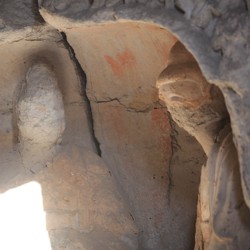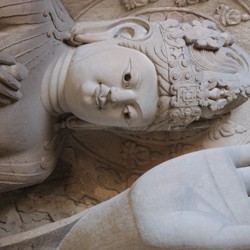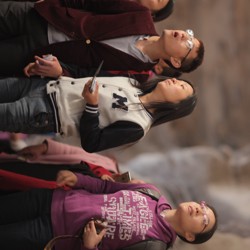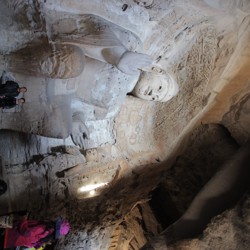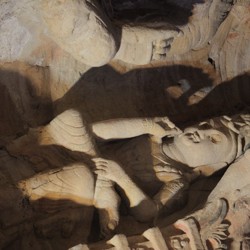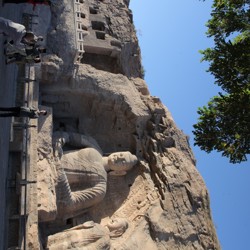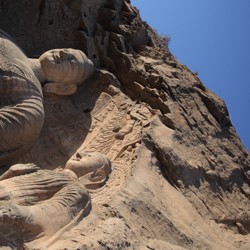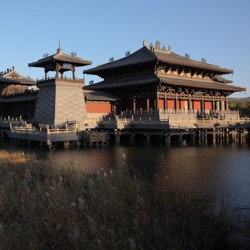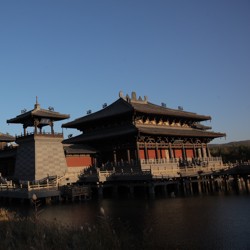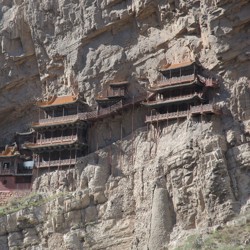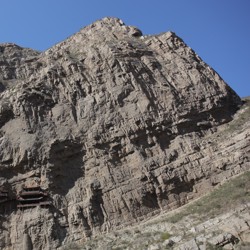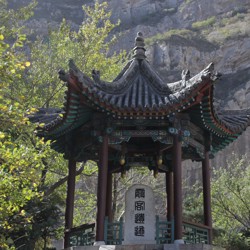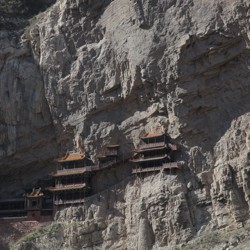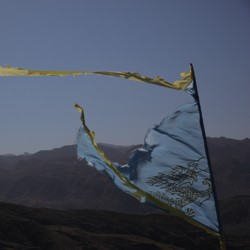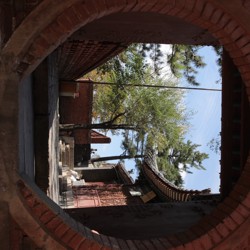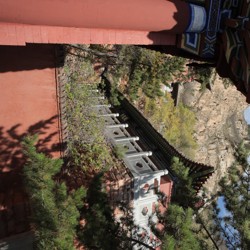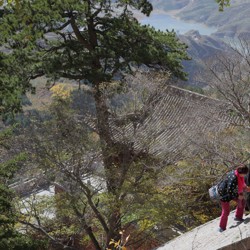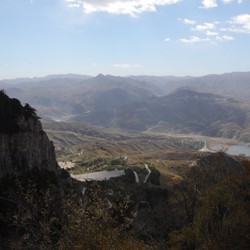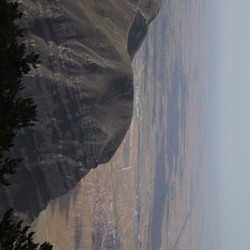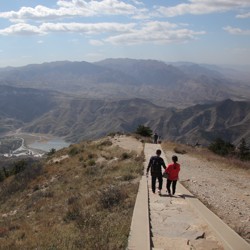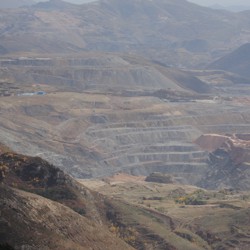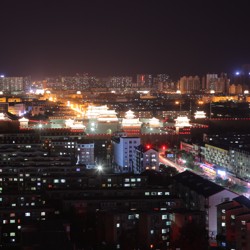10. October 2015
Dàtóng - Walking the Tourist’s path
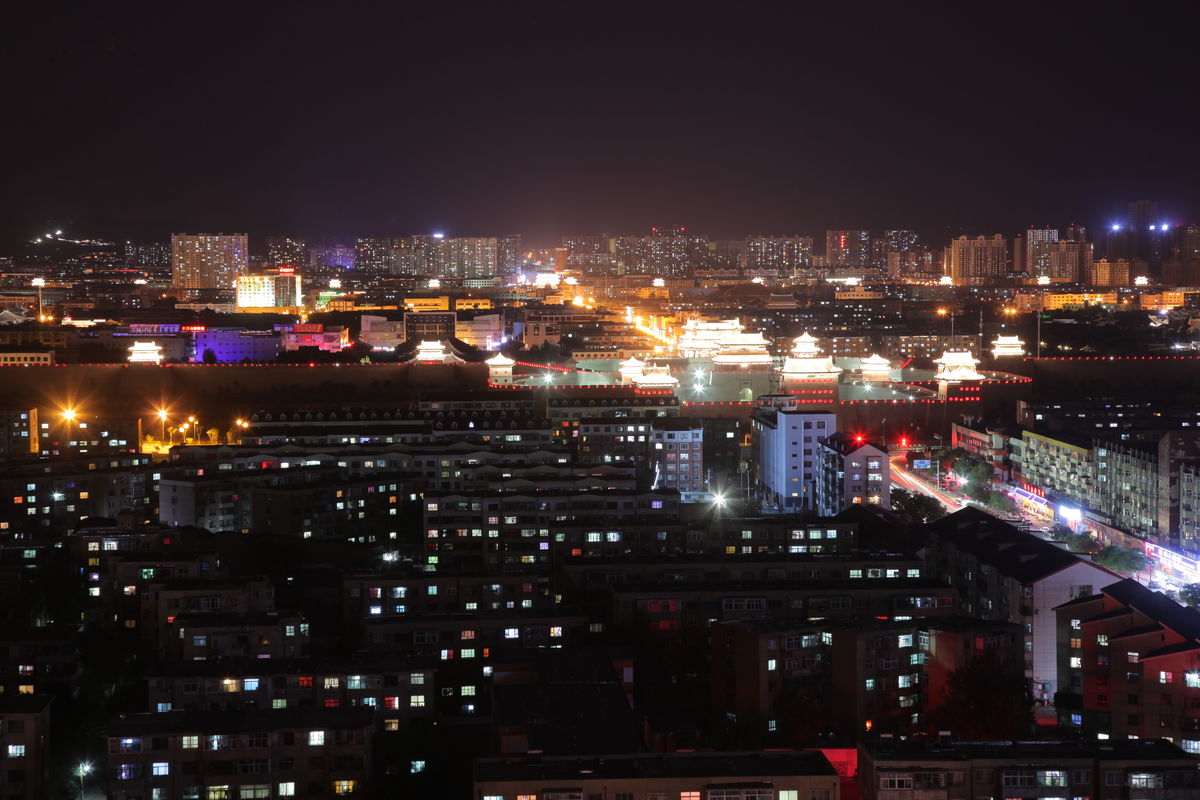
I arrived at 3 pm in the morning in this according to Chinese standards not-too-big city (only around 3.3 million inhabitants). Evading the annoying offers for a taxi – always a bit more difficult if there are just a few other travellers exiting the station – I set off to look for my hostel. It was some kilometers away, but since I had plenty of time to spare, I hoped to see a bit of the city. Even at this time of the day the city seemed to be busier than Kangbashi had been during the day.
But there is actually not that much to be seen in Dàtóng at any time. It is a very generic city and doesn‘t have too much to offer – except maybe for its recently rebuild “old“ city. A pretty expensive investion, by the way, with more than four billion Euros spent. Most tourists are therefore using Dàtóng mainly as a base to explore the surrounding sights.
After having had a coffee, selecting photos and writing entries for this blog, I finally went to the hostel itself, which was located on the 22th floor, giving a good view over the city. Now that the Golden Week and the main season in general were over, it was also almost empty and I shared the whole dorm with just one girl from Hungary, which had just started studying Chinese in Tiānjīn (near Běijīng).
Since I was not that interested in Dàtóng and hadn‘t that much time to spare, anyway, I headed to the first major sight: the Yúngāng Caves. This place, which can still be easily reached by using local buses, is a nice example of Buddhist cave art. In numerous grottoes Buddhist figures have been carved out of the surrounding stone. And while the local government has certainly sensed a cash cow – the touristic infrastructure is fully developed and the admission fee is quite high – it is still a nice place to explore.
Suddenly, as I was just walking out of one of the major caves, I was addressed by two women, who tried to engage me in a conversion. Of course, only speaking a few words in Chinese did not really make it easy, but after a few tries to get a understanding, I repeated the last part, which they put emphasize on: Nā Mó Ā Mí Tóu Fó. After some further repetitions they were quite happy, even enthusiatic, and together with their pointing to a group of monks walking towards us, I started to understand: It was a Buddhist chant and they were a group of monks and maybe nuns, travelling to this important site. After shortly introducing me to the monks, they gave me Buddhist prayer beads and we said goodbye to each other. It was a quite a nice surprise having met them and reminded me again why I sometimes like to travel alone.
The next morning I set off with a Chinese/Taiwan guy in our hostel (he had booked a single room) to get to more distant destinations, sharing a driver for that day. First we went to the famous hanging monastery. Built already more than 1500 years ago, this monastery is directly fitted into the cliffs. Unfortunately at the time of visiting it was closed for visitors (if you speak German, you may read about Andy’s experiences on his blog, since he could still visit it), but it was still an interesting sight.
But for me hiking the nearby Héng Shān, one of the Five Great Mountains, was the more interesting part of our tour anyway. Although not that high – the peak is at an altitude of 2016 m – it is an interesting climb, crossing a lot of temples along the way and having a great view in general.
During the next few days I will continue to travel on some more or less touristic paths. Wutaí Shān is at least for Chinese tourists popular destination – not only because of its importance for some Buddhists – and Píngyáo and Xī‘ān are well known for their touristic values. But afterwards I will be a bit more off the beaten path and I wonder how many non-Chinese people I will see in the following weeks.
